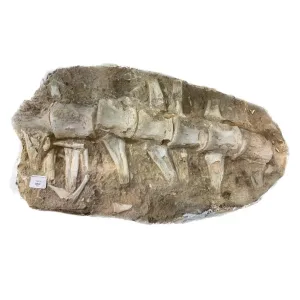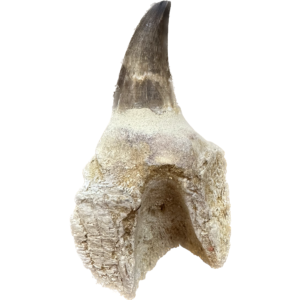Mosasaurs, formidable marine reptiles of the Late Cretaceous period, inhabited the world’s oceans approximately 70 to 66 million years ago. These creatures were apex predators, boasting streamlined bodies reaching lengths of up to 50 feet (15 meters), formidable jaws equipped with interlocking teeth, and powerful tails adapted for swift swimming. Their elongated bodies facilitated rapid movement through the water, enabling them to pursue and capture prey with remarkable agility.
Mosasaurs were cosmopolitan, found in oceans worldwide, from the shallow seas covering present-day North America to the deeper waters of Europe and beyond. They occupied a prominent position in the Late Cretaceous marine food web, preying on a variety of marine life, including fish, cephalopods, and even other marine reptiles.
Fossils of mosasaurs offer valuable insights into their biology, behavior, and evolutionary significance. Paleontologists have uncovered well-preserved skeletons, teeth, and occasionally soft tissue impressions, providing detailed anatomical information about these ancient predators. By studying mosasaur fossils, scientists can reconstruct their locomotion, feeding habits, and ecological roles in ancient marine ecosystems.
Moreover, mosasaur fossils contribute to our understanding of the broader evolutionary history of marine reptiles. They offer clues about the origins, diversification, and extinction of this fascinating group of prehistoric creatures, shedding light on the dynamics of life in the ancient oceans.
Mosasaurus: The First Marine Super Predator (Learn about Mosasaurus)



